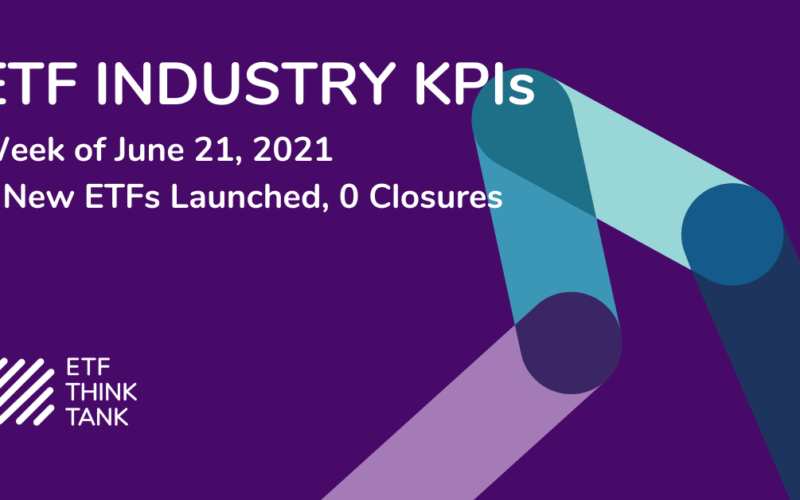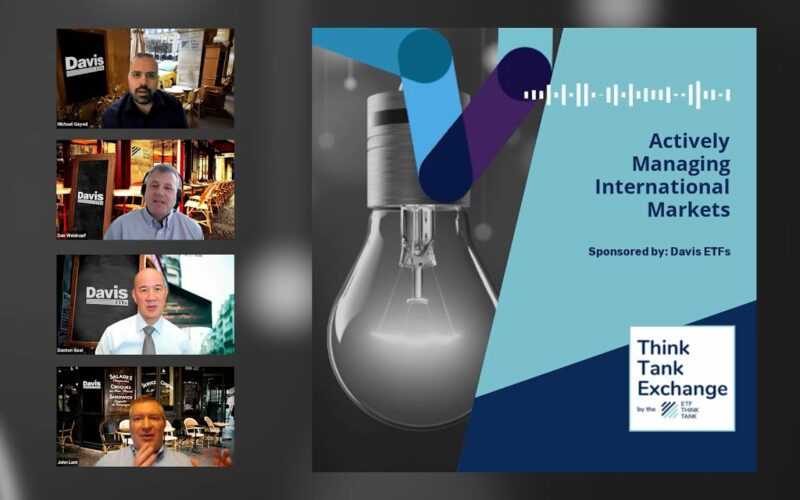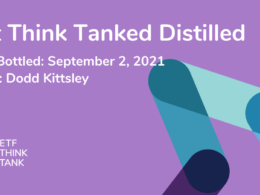The energy sector has seen a great deal of volatility over the past several years, although stocks within this group have made a strong recovery off the COVID bear market bottom. Where is the energy market, both fossil fuels and renewables, headed from here? Paul Baiocchi, the senior investment strategy advisor at SS&C ALPS Advisors, enters the ETF Think Tank to discuss MLPs, the migration towards renewable energy, ESG investing in the energy sector, and more.
With much discussion centering around inflation at the moment, how can energy and commodities be expected to perform in such an environment. Baiocchi says that midstreams, which focus on the transport, storage and processing on various energy products, have traditionally performed well in inflationary cycles. As inflation rates rise and oil prices go up, all points on the stream tend to benefit, but midstream companies, which tend to have relatively steady demand regardless of energy price levels, can have some defensive properties to them as well. Because commodities can be priced with an inflation rate built in, they have some similarities to TIPS. Value stocks also tend to do well in inflationary environments.
Most people are aware that MLPs have struggled mightily recently along with the rest of the energy sector. Baiocchi says that the previous environment, where many MLPs focused on high leverage and distribution growth, fueled some of the sector’s issues and allowed some structures to focus on short-term benefits over long-term potential. He notes that conditions have begun improving as companies focus more on financial flexibility than high yield. Leverage is coming down and distribution coverage is improving. There is also a heightened focus on buybacks and paying back debt that’s creating a backdrop of greater discipline and higher free cash flows. These factors should help lower the sector’s overall risk and enhance opportunities going forward.
How can (or should) investors consider implementing MLPs into a market that’s long rewarded growth stocks? Baiocchi explains midstreams fit within the objectives of retail investors and could address the underweight to energy that exists in many portfolios. In the Russell 1000 index, energy accounts for less than 3%. In growth indices, there may be little to no exposure at all. Even if you’re running a very basic index approach, it’s become growth-overweight. Value sectors, such as midstreams, help to offset that. Even when midstreams should have had the worst possible year in 2020 as there were great concerns about energy prices, bankruptcies and counterparty risks, they still delivered results that were in line with what was expected at the beginning of the year. Baiocchi views that as a sign of the group’s defensive orientation. This type of behavior could benefit investors in the long run.
An interesting topic that was brought up was the evolution of energy companies in the ESG space. Many would dismiss energy companies from ESG indices based on the traditional view of what they do, but many are transitioning into renewable energy products. Baiocchi believes that there is some nuance to this. He feels the reality is that decarbonization means more electricity demand and while wind and solar will play a large role, they tend to be high latency energy sources. Many companies, however, are developing renewable strategies and pipelines can be restructured to help move renewable energies, so midstreams will also play a huge future role.
Given the focus on renewables, will we see oil companies begin to show up in some of these ESG indices in the near future? Baiocchi feels that when taking a broader view, it’s probably less likely that it will happen soon. One of the issues with larger ESG indices is that they aren’t often designed to be as personal as they should be. Definitions of what qualifies as ESG are often different. One index may exclude weapons producers, while another may allow them. MLPs have a better chance of showing up sooner in customized ESG indices, but the large ones will probably exclude the fossil fuel space for a while. Direct indexing is the likelier source than a traditional index ETF.
The one challenge Baiocchi sees in the MLP space currently is where is future growth going to come from? Capex budgets are coming down now, which is good for free cash flows, but it’s less money spent on future growth. The U.S. government may prevent the development of new pipelines and it may become harder to move hydrocarbons around. The biggest opportunity may lie in ESG and renewables, but the return on investment with these projects is still unclear.
This week our guest will be Carol Roth, joining us to discuss small business, government stimulus, and entrepreneurship. Sign up here.
Disclosure
All expressions of opinion are subject to change without notice in reaction to shifting market conditions. Data contained herein from third party providers is obtained from what are considered reliable sources. However, its accuracy, completeness or reliability cannot be guaranteed.
Examples provided are for illustrative purposes only and not intended to be reflective of results you can expect to achieve.
All investments involve risk, including possible loss of principal.
The value of investments and the income from them can go down as well as up and investors may not get back the amounts originally invested, and can be affected by changes in interest rates, in exchange rates, general market conditions, political, social and economic developments and other variable factors. Investment involves risks including but not limited to, possible delays in payments and loss of income or capital. Neither Toroso nor any of its affiliates guarantees any rate of return or the return of capital invested. This commentary material is available for informational purposes only and nothing herein constitutes an offer to sell or a solicitation of an offer to buy any security and nothing herein should be construed as such. All investment strategies and investments involve risk of loss, including the possible loss of all amounts invested, and nothing herein should be construed as a guarantee of any specific outcome or profit. While we have gathered the information presented herein from sources that we believe to be reliable, we cannot guarantee the accuracy or completeness of the information presented and the information presented should not be relied upon as such. Any opinions expressed herein are our opinions and are current only as of the date of distribution, and are subject to change without notice. We disclaim any obligation to provide revised opinions in the event of changed circumstances.
The information in this material is confidential and proprietary and may not be used other than by the intended user. Neither Toroso or its affiliates or any of their officers or employees of Toroso accepts any liability whatsoever for any loss arising from any use of this material or its contents. This material may not be reproduced, distributed or published without prior written permission from Toroso. Distribution of this material may be restricted in certain jurisdictions. Any persons coming into possession of this material should seek advice for details of and observe such restrictions (if any).












